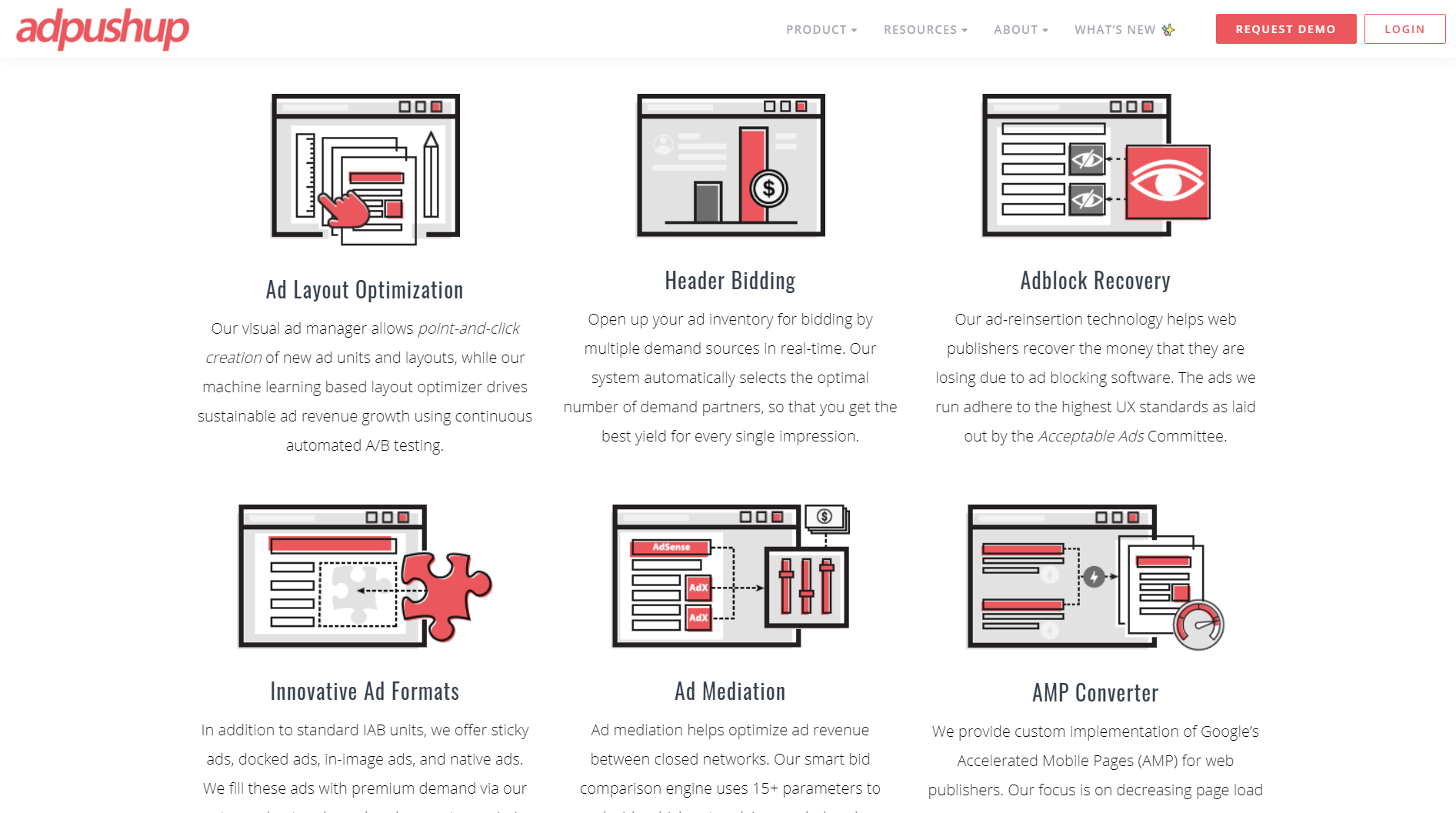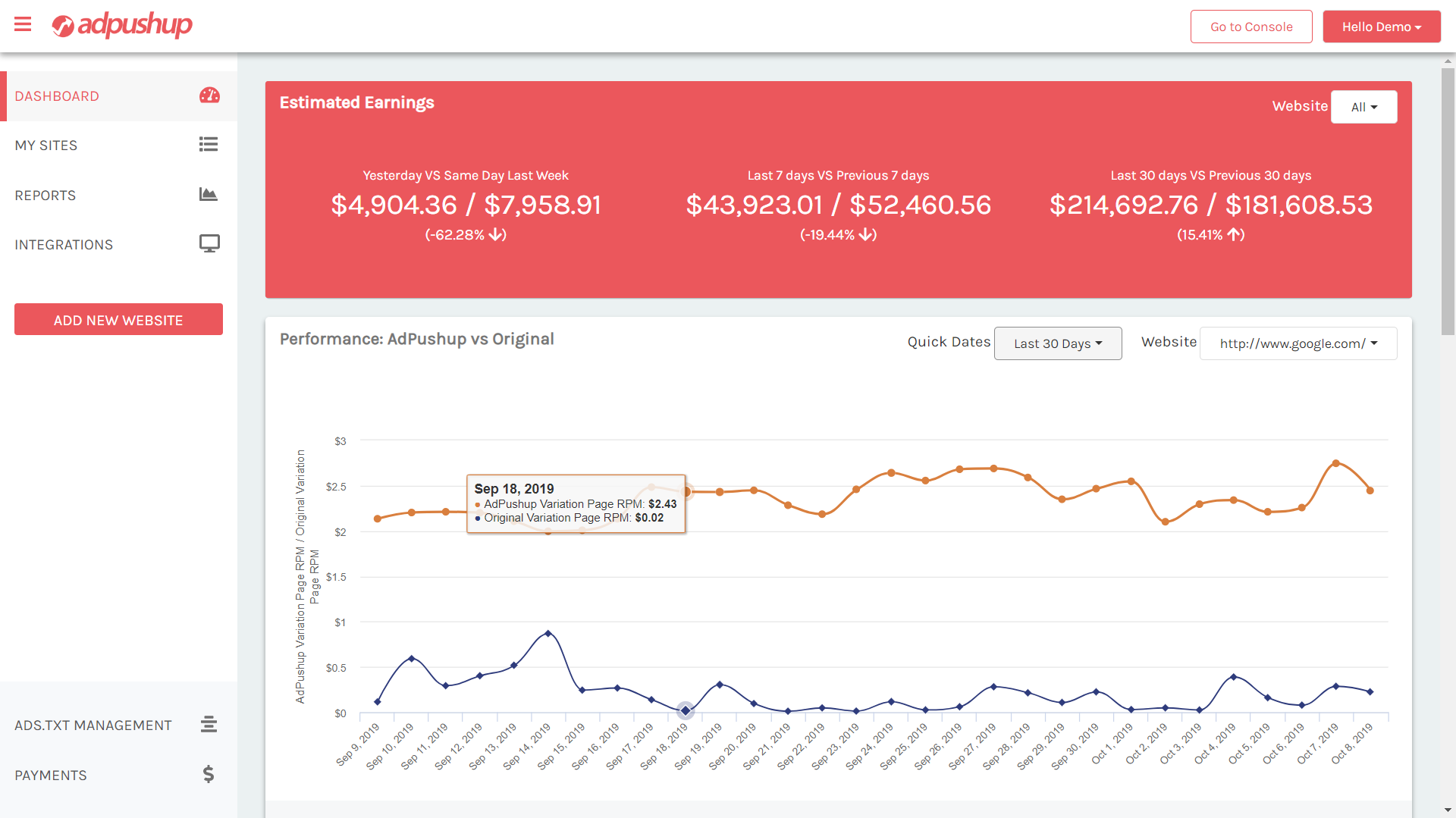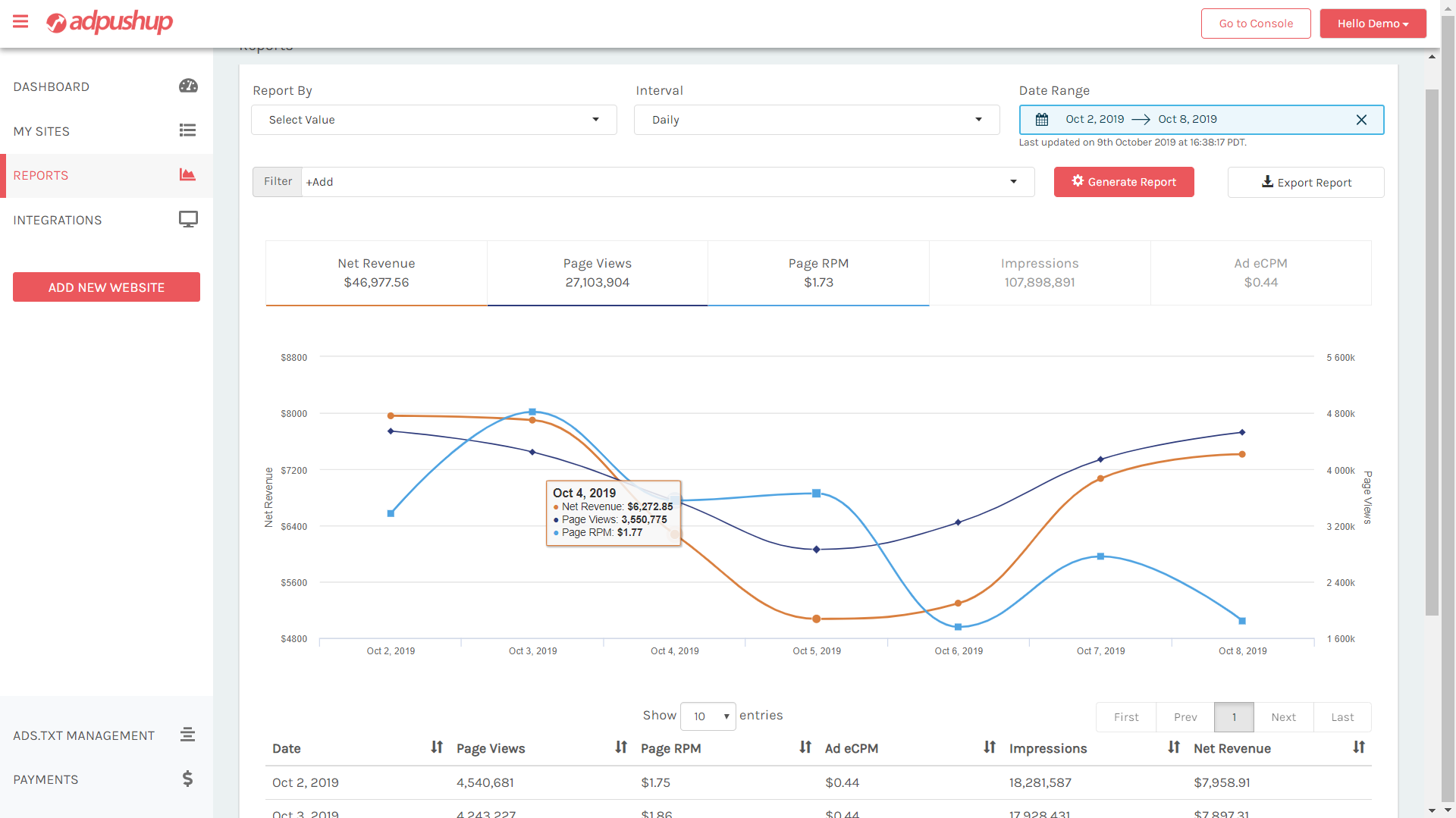How to Sell Your Content and Create a Separate Source of Income
As a publisher, you produce content because you want it to be seen. Generating traffic for that is the first aspect here. At the same time, you also want to optimize the ads on your site in order to maximize your monetization potential. Hence, figuring out how to monetize the traffic becomes the second aspect.
You can’t just be tossing up random ads anywhere hoping for the best to happen. It takes the right tools with the right technology for the job. AdPushup, one of the fastest-growing revenue optimization tools out there, has been doing exactly that.
Upon trying and testing, I learnt the platform uses automated A/B testing and machine learning in order to create ad layouts that convert. In this post, I’d like to present my thoughts on how I think the platform helps publishers optimize their ad stack, while overcoming common challenges and growing the bottom line.
A Detailed AdPushup Review and How to Use Push Notifications
The objective of AdPushup is quite clear: optimize the ads on a website in a way that they drive the maximum revenue. To accomplish this, AdPushup offers technologies that have been known to ad tech for a while; and are now rapidly gaining traction amongst publishers.
Here’s a glimpse of the technology features that I’ll further discuss in this post:

Conversion Driven Ad Layouts
In my experience, one of AdPushup’s strongest USPs is the Ad Layout Optimization tool.
Being a publisher, you may have a sense of how to make your site look good. But do you have proven data to back your decisionsーwhere should your ads go, what type/format should you choose, and what next after the ads are in place?
If you’re anything like me, you’d want to interact with an easy-to-understand visual interface, than bury yourself elbow-deep in HTML, PHP, or CSS. The Ad Layout Optimization tool offers a point-and-click interface to help laymen like us create new ad units and layouts by ourselves.
Beyond that, the algorithm leverages machine learning to optimize the ad layout through ongoing A/B testing. As a publisher, the more work you can automate, the more time you invest in creating great content!
The Need for Demand
As much as advertisers seek premium, targeted inventory for their ad campaigns, publishers also want their inventory in the right hands. Moreover, header bidding helps garner better value for the inventory. As a result, a lot of inventory-owners are getting started with header bidding.
Upon researching, I came across the demand partnerships AdPushup has to offer to its publishersーindustry-names like IndexExchange, Media.Net, Rubicon, Sovrn, DistrictM, Pubmatic among others. As a publisher, it helps me develop some faith in investing in this practice knowing that my inventory is in safe hands.
Counter to Ad Blockers
In a report by Statista, as of 2019, 25.8% of the Internet users in the US are using ad blockers. That’s like 1/4th of my traffic not being able to see my ads. In my view, this is pretty much enough to cause some serious FOMO around ad impressions to any publisher.
The adblock recovery solution by AdPushup acts as a remedy here. The solution first detects the users who might be using AdBlock. Next, adhering to Acceptable Ads, only shows user-friendly and non-obstructive ads. The best part is, users get to have a last say about whether they want to see the re-inserted ads or not.
But why would users agree to see ads again, when they had them blocked in the first place?
You see, users don’t hate ads. They just hate disrupting, annoying ads. The adblock recovery solution only shows ads that pass the Acceptable Ads Standards’ eligibility and qualify to be called ‘acceptable ads.’
With AdRecover, AdPushup helps publishers recover revenue that would have otherwise been lost, while adhering to high UX standards. The net result is more money in your pocket without having to look for new revenue channels.
Ads that Are Seen
Most of the Internet is flooded with display ads. In an environment where users take seconds to decide to either engage or disconnect with a site, poorly placed ads are very likely to go unnoticed. The industry calls this phenomena banner blindness.
AdPushup provides innovative ad formats as a solution for publishers. Their library includes formats like in-image ads, in-view ads, docked ads, and sticky ads, along with native. These ad formats are unique and help improve ad viewability and CTRs.
Managing Everything on Your Own
Along with the various ad optimization solutions offered by AdPushup, it also has a consolidated app manager. Meaning, you get an interactive interface where you can manage your inventory and take charge of your actions.
For example, if you’re using header bidding, you get to see the option to add/remove demand partners. Or, while using the ad layout editor, you can simply create layouts and see the A/B test results populating in the panel.
The best part is, you get constant guidance from AdPushup. Whether it is about creating layouts, or you need advice with header bidding, the support guys with their professional ad ops expertise lend you a hand at every step. Being a fully-managed platform, they also take on the complete legwork on your behalf.
This empowers publishers with more flexibility, making AdPushup more publisher-friendly. It’s a great fit especially for novice publisher who may otherwise be intimidated by the complex or technical requirements of ad optimization.
Do you use web apps on your computer? These are designed by keeping the end-user in mind, and the AdPushup platform works in much the same way.

In addition to the visual layout editor, you’ll find features like AdRecover—anti-ad-block solution which we just discussed.
Next, the AMP-conversion feature makes it easy to convert web pages to AMP (Accelerated Mobile Pages). The point is, it’s both easy and powerful for you regardless of your level of technical expertise.
In the case you are working with closed networks that don’t participate in header bidding, the Ad Mediation feature leverages machine learning to determine which network is likely to bid the highest.

Many publishers underutilize their ads. Hence, a feature you might enjoy using in the app manager is Innovative Ads. Through a simple step-by-step wizard, you are able to build ad units for high-value placements. The biggest key with AdPushup is to look for the big wins along with the improvements to maximize your earning potential.
What’s more? With AdPushup, you can manage multiple sites under one account. This saves time, making it much more accessible for you to dive deep into the intricacies, and understand what brings you dollars and cents in through the front door.
Seeing the Performance at a Glance
When you log into your account, you are presented with a clean and robust dashboard. What’s great is that you can not only look at your estimated earnings for each individual web property, but also for your account as a whole, right at the top.
This includes comparing yesterday’s earnings against the same day of the last week, comparing the last 7 days versus the previous period. I personally found this quite convenient and effortless.

Similarly, you can review a graph that compares your performance with AdPushup versus your original setup, paying specific attention to your page RPM. Again, this is true for your account as a whole and for individual websites. You can also choose between date settings like yesterday, the last 7 days, the last 30 days, or this month.
Below that, (not shown in the screenshot above) you’ll get to see a pie chart showing your revenue by networks, helping you decide where to focus and how to align your efforts.
The main navigation in the left sidebar is easy enough to understand, showing an interface packed with data in a tidy manner. Reviewing individual sites is straightforward, including viewing individual reports and managing individual sites—accessing AP head code and managing blocklist.
Getting into Detailed Reporting
What we discussed above was the dashboard. The reporting on AdPushup is further more detailed. You can choose reports based on the site, device, network, page group, page variation, and more. Furthermore, you can choose an interval, add filters, review page views, look over ad eCPM, and so much more in reporting data.
If you’d like to analyze the data even further, reports are easily exportable in Excel format. With this data, you can make informed decisions about which opportunities to pursue.

One approach that I find particularly appealing is being able to generate a report based on the revenue channel. This reveals how each channel performed on each date in terms of ad eCPM, impressions and net revenue. (Probably one of the most important things publishers are after.)

This kind of report should reveal your greatest areas of growth, as well as shed light on areas with the biggest potential upside. What are you overlooking? What revenue channels are improving or falling over time? Are you even on the right path of monetizing your ads?
Final Thoughts
As a robust monetization tool for publishers, AdPushup comes powered with an intuitive user interface, deep reporting options, and several features to elevate your monetization to a whole new level.
With quick integration, continuous optimization powered by machine learning, and a convenient payment schedule, I find that this is the kind of utility you want to have in your arsenal if you want to really raise your bottom line. If you’re not already using AdPushup, you’re leaving money on the table.
Have you really optimized your ads yet? I think it’s never too late to get started.
Related blog posts and resources:







